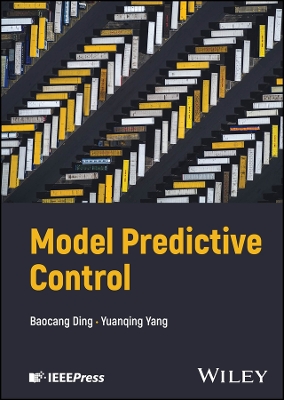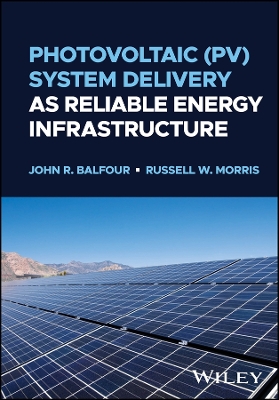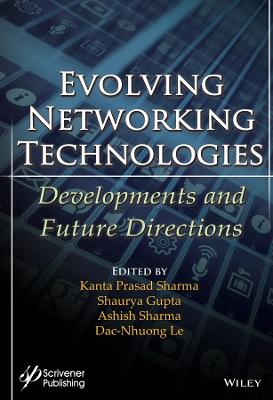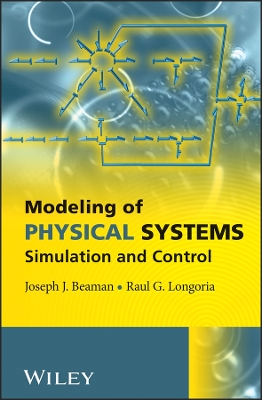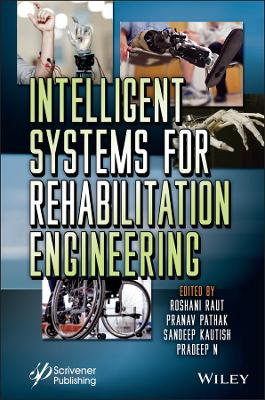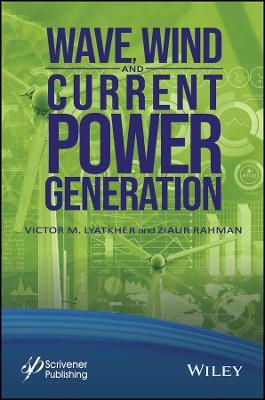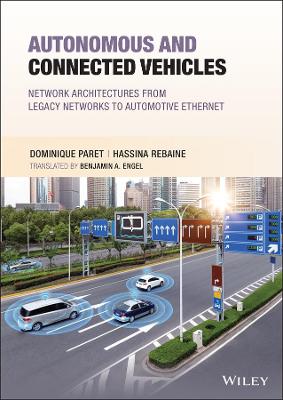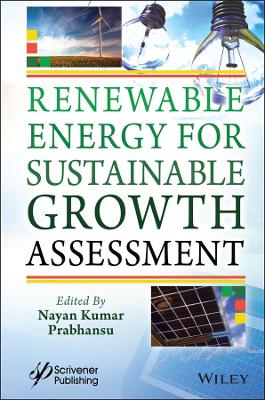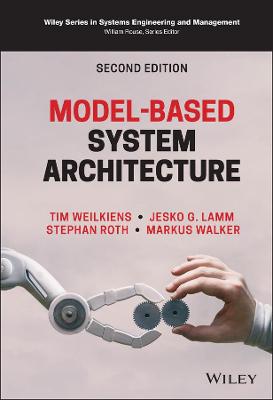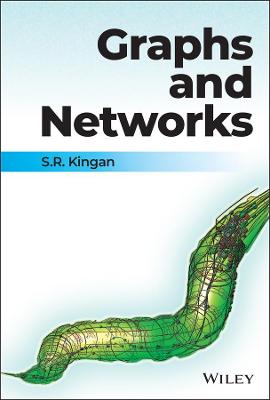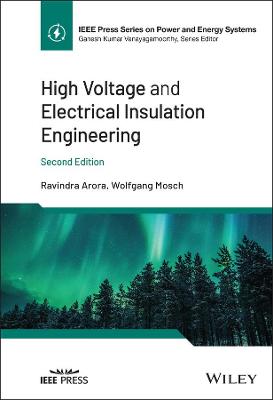Low Electromagnetic Field Exposure Wireless Devices
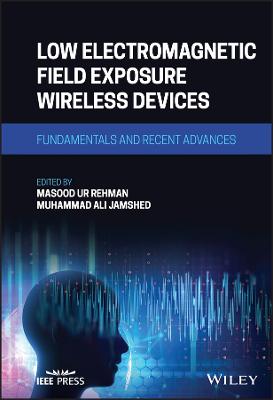 -15%
portes grátis
-15%
portes grátis
Low Electromagnetic Field Exposure Wireless Devices
Fundamentals and Recent Advances
Jamshed, Muhammad Ali; Ur Rehman, Masood
John Wiley & Sons Inc
12/2022
256
Dura
Inglês
9781119909163
15 a 20 dias
666
List of Contributors xiii
Preface xv
1 Electromagnetic Field Exposure: Fundamentals and Key
Practices 1
Muhammad Ali Jamshed, Fabien Heliot, Tim W.C. Brown, and
Masood Ur Rehman
1.1 Introduction 1
1.2 EMF Metric and Evaluation Framework 3
1.2.1 EMF Exposure Factors 4
1.2.1.1 Transmit Antenna Regions 4
1.2.1.2 Transmit Antenna Characteristics 5
1.2.1.3 Duration of Exposure 6
1.2.1.4 Electrical Properties of Biological Tissues 6
1.2.2 EMF Exposure Metrics 6
1.2.2.1 Specific Absorption Rate 7
1.2.2.2 Power Density 8
1.2.2.3 Exposure-Ratio 9
1.2.2.4 Dose 10
1.2.2.5 Composite/Generic Metric of EMF Exposure 10
1.3 Application of Metric for Setting Guidelines/Limits and Reducing
Exposure 10
1.3.1 SAR Reduction 11
1.3.2 PD Reduction 12
1.3.3 Exposure-Ratio Reduction 12
1.3.4 Dose Reduction 12
Contents vii
1.3.5 Composite EMF Exposure Reduction 13
1.4 Conclusion 13
References 13
2 Exposure to Electromagnetic Fields Emitted from Wireless
Devices: Mechanisms and Assessment Methods 19
Yasir Alfadhl
2.1 Fundamentals of EMF Interactions with the Human Body 19
2.1.1 Thermal Effect 21
2.1.2 Non-thermal Effects 22
2.2 Physical Models to Represent the Interaction of EMFs with Biological
Tissue 24
2.2.1 Interaction Mechanisms 24
2.2.1.1 Effects of Bound Charges 25
2.2.1.2 Effects of Dipole Orientations 25
2.2.1.3 Drift of Conduction Charges 25
2.2.2 Dielectric Properties of Biological Materials 26
2.2.2.1 Relaxation Theory 26
2.2.2.2 Age-Dependent Dielectric Properties 28
2.2.3 The Interaction of EM Fields with Biological Materials 28
2.2.3.1 Interactions on the Body Scale 29
2.2.3.2 Interactions on the Tissue Scale 30
2.2.3.3 Interaction on the Cellular and Sub-cellular Scales 30
2.3 Dosimetry Concepts 30
2.3.1 The Specific Absorption Rate (SAR) 31
2.3.1.1 SAR Measurement Techniques over the Frequency Spectrum 31
2.3.1.2 SAR Spatial Averaging 32
2.3.1.3 Tissue Mass Averaging Procedures 32
2.3.1.4 Localized and Whole-Body Averaged SAR 34
2.3.2 The Specific Absorption (SA) 34
2.4 Dosimetry Methodology 35
2.4.1 Experimental Dosimetry 35
2.4.2 Numerical Dosimetry 36
2.4.2.1 Theoretical Analysis 36
2.4.2.2 Numerical Modelling 37
2.5 Numerical Dosimetry at the Radiofrequency and Microwave
Regions 38
2.5.1 Formulation of the Scattered-Field FDTD Algorithm 39
2.5.2 Discretization of Anatomical Models in FDTD 40
2.5.3 Comparisons of Numerical Results with Analytical Benchmarks 42
References 46
viii Contents
3 Numerical Exposure Assessments of Communication
Systems at Higher Frequencies 49
Muhammad Rafaqat Ali Qureshi, Yasir Alfadhl, and Xiaodong Chen
3.1 Introduction 49
3.2 Exposure Configuration 50
3.3 PlaneWave Exposure Assessment of E-field Absorption Within the
Skin Using SAR as a Function of Frequency 51
3.3.1 Comparisons of SAR Levels on Dry-Skin andWet-Skin 52
3.4 PlaneWave Exposure Assessment of E-field Absorption Within
Multi-layer Model Using SAR as a Function of Frequency 58
3.4.1 Comparisons of SAR Levels on Dry-Skin and Multi-layer Model 59
3.5 PlaneWave Exposure Assessment of E-field Absorption Within the
Eye Using SAR as a Function of Frequency 63
3.5.1 Comparisons of SAR Levels on HEECM and Multi-layer Model 64
3.6 Chapter Summary 68
Appendix 3.A 69
References 74
4 Age Dependent Exposure Estimation Using Numerical
Methods 77
Muhammad Rafaqat Ali Qureshi, Yasir Alfadhl, Xiaodong Chen, and
Masood Ur Rehman
4.1 Introduction 77
4.2 Numerical Human Models 78
4.2.1 Adult Voxel Models 78
4.2.2 Child Voxel Model 79
4.3 Age-Dependent Tissue Properties 81
4.3.1 Measured Tissue Properties 82
4.3.2 Age-dependent Human Dielectric Properties Extraction from
Measured Data 83
4.3.3 Novel Calculation Methods of Age-dependent Dielectric
Properties 83
4.3.3.1 Single Frequency Age-Dependent Method 84
4.3.3.2 Dispersive Age-Dependent Method 86
4.3.3.3 Implementation of the Cole-Cole Model on Age-Dependent
Properties 90
4.3.3.4 Accuracy Among the Age-dependent Methods 91
4.4 Numerical Validation 95
4.4.1 Comparison with an Analytical Benchmark 95
4.5 Chapter Summary 97
Appendix 4.A 97
References 111
Contents ix
5 Antenna Design Considerations for Low SAR Mobile
Terminals 115
Muhammad Ali Jamshed, Tim W.C. Brown, and Fabien Heliot
5.1 Introduction 115
5.2 SAR Reduction and Dual Coupling of Antenna 117
5.3 Coupling Manipulation Simulation Campaign 118
5.4 SAR Analysis and Surface Current 123
5.5 Resilience to Different Head Use Cases 127
5.6 Analysis of MIMO Performance in Data Mode 130
5.7 Conclusion 132
References 132
6 MIMO Antennas with Coupling Manipulation for Low SAR
Devices 135
Muhammad Ali Jamshed, Tim W.C. Brown, and Fabien Heliot
6.1 Introduction 135
6.2 Working Principle and Antenna Geometry 136
6.2.1 Antenna Dimensions 136
6.2.2 Surface Current Distribution 138
6.2.3 Frequency Region Analysis 139
6.3 Antenna Measurements 141
6.3.1 MIMO Performance 141
6.4 Efficiency and SAR Analysis 143
6.5 Conclusion 148
References 148
7 Reinforcement Learning and Device-to-Device
Communication for Low EMF Exposure 151
Ali Nauman, Muhammad Ali Jamshed, and Sung Won Kim
7.1 Introduction 151
7.1.1 Contribution of Chapter 153
7.1.2 Chapter Organization 154
7.2 Background 154
7.2.1 Narrowband Internet of Things (NB-IoT) 155
7.2.1.1 Frame Structure 155
7.2.2 Device-to-Device (D2D) Communication 157
7.2.3 Machine Learning 160
7.2.3.1 Reinforcement Learning 160
7.2.3.2 Q-Learning 162
7.3 RelatedWorks 163
7.4 System Model, Problem Formulation, and Proposed RL-ID2D 164
x Contents
7.4.1 Network Model 164
7.4.1.1 Channel Model 164
7.4.1.2 Mobility Model 164
7.4.1.3 Signal-to-Interference-Noise-Ratio (SINR) 166
7.4.2 Definitions 166
7.4.2.1 Packet Delivery Ratio 166
7.4.2.2 Potential Relay Set 167
7.4.2.3 End-to-End Delivery Ratio 167
7.4.3 Problem Formulation 167
7.4.4 Reinforcement Learning Enabled Relay Selection 168
7.4.4.1 Q-Learning Framework 168
7.4.5 Proposed Intelligent D2D Mechanism 171
7.5 Performance Evaluation 174
7.5.1 Simulation Deployment Scenario and Analysis 174
7.5.1.1 Analysis of Q-Learning Behavior in NB-IoT UE 174
7.5.1.2 Analysis of EDR Under Various Parameters 178
7.5.1.3 Analysis of E2E Delay Under Various Parameters 179
7.5.1.4 Comparative Analysis of RL-ID2D with Opportunistic and
Deterministic Model 180
7.6 Conclusion 183
References 183
8 Unsupervised Learning Based Resource Allocation for Low
EMF NOMA Systems 187
Muhammad Ali Jamshed, Fabien Heliot, and Tim W.C. Brown
8.1 Introduction 187
8.1.1 ExistingWork 188
8.1.2 Motivation and Contributions 189
8.1.3 Structure of the Chapter 190
8.2 EMF-Aware PD-NOMA Framework 192
8.2.1 System Model 192
8.2.2 Problem Formulation 195
8.3 Machine Learning Based User Grouping/Subcarrier Allocation 196
8.4 Power Assignment 198
8.5 Numerical Analysis 201
8.5.1 Simulation Results 202
8.5.2 Scheme Validity for Real Applications 206
8.6 Conclusion 208
References 208
Contents xi
9 Emission-Aware Resource Optimization for
Backscatter-Enabled NOMA Networks 213
Muhammad Ali Jamshed, Wali Ullah Khan, Haris Pervaiz,
Muhammad Ali Imran, and Masood Ur Rehman
9.1 Introduction 213
9.1.1 Motivation and Contributions 214
9.2 System Model 215
9.2.1 Problem Formulation 217
9.3 Proposed Solution 218
9.3.1 Sub-carrier Allocation 218
9.3.2 Power Allocation 218
9.4 Performance Evaluation 221
9.5 Conclusion 223
References 223
10 Road Ahead for Low EMF User Proximity Devices 225
Muhammad Ali Jamshed, Fabien Heliot, Tim W.C. Brown, and
Masood Ur Rehman
10.1 Introduction 225
10.2 Perception and Physiological Impact of EMF 226
10.2.1 Public's Perception of Exposure and Risk Assessment 226
10.2.2 Physiological Impact 227
10.2.2.1 Age Range and Exposure 227
10.2.2.2 mmWave and Exposure 227
10.2.2.3 Brain Tumour and Exposure 228
10.3 EMF Exposure Evaluation Metric and Regulations: A Future
Perspective 229
10.3.1 Expected Exposure Contribution of Future Wireless Communication
Technologies 229
10.3.1.1 Exposure and mmWave 229
10.3.1.2 Exposure and Massive MIMO 229
10.3.1.3 Exposure and Densification 230
10.3.2 Open Issues and Future Research Tracks 231
10.3.2.1 New EMF Limits and Guidelines 231
10.3.2.2 EMF Mitigation Techniques and New Metrics 231
10.3.2.3 Other Open Issues 232
10.4 Conclusion 232
References 233
Index 237
List of Contributors xiii
Preface xv
1 Electromagnetic Field Exposure: Fundamentals and Key
Practices 1
Muhammad Ali Jamshed, Fabien Heliot, Tim W.C. Brown, and
Masood Ur Rehman
1.1 Introduction 1
1.2 EMF Metric and Evaluation Framework 3
1.2.1 EMF Exposure Factors 4
1.2.1.1 Transmit Antenna Regions 4
1.2.1.2 Transmit Antenna Characteristics 5
1.2.1.3 Duration of Exposure 6
1.2.1.4 Electrical Properties of Biological Tissues 6
1.2.2 EMF Exposure Metrics 6
1.2.2.1 Specific Absorption Rate 7
1.2.2.2 Power Density 8
1.2.2.3 Exposure-Ratio 9
1.2.2.4 Dose 10
1.2.2.5 Composite/Generic Metric of EMF Exposure 10
1.3 Application of Metric for Setting Guidelines/Limits and Reducing
Exposure 10
1.3.1 SAR Reduction 11
1.3.2 PD Reduction 12
1.3.3 Exposure-Ratio Reduction 12
1.3.4 Dose Reduction 12
Contents vii
1.3.5 Composite EMF Exposure Reduction 13
1.4 Conclusion 13
References 13
2 Exposure to Electromagnetic Fields Emitted from Wireless
Devices: Mechanisms and Assessment Methods 19
Yasir Alfadhl
2.1 Fundamentals of EMF Interactions with the Human Body 19
2.1.1 Thermal Effect 21
2.1.2 Non-thermal Effects 22
2.2 Physical Models to Represent the Interaction of EMFs with Biological
Tissue 24
2.2.1 Interaction Mechanisms 24
2.2.1.1 Effects of Bound Charges 25
2.2.1.2 Effects of Dipole Orientations 25
2.2.1.3 Drift of Conduction Charges 25
2.2.2 Dielectric Properties of Biological Materials 26
2.2.2.1 Relaxation Theory 26
2.2.2.2 Age-Dependent Dielectric Properties 28
2.2.3 The Interaction of EM Fields with Biological Materials 28
2.2.3.1 Interactions on the Body Scale 29
2.2.3.2 Interactions on the Tissue Scale 30
2.2.3.3 Interaction on the Cellular and Sub-cellular Scales 30
2.3 Dosimetry Concepts 30
2.3.1 The Specific Absorption Rate (SAR) 31
2.3.1.1 SAR Measurement Techniques over the Frequency Spectrum 31
2.3.1.2 SAR Spatial Averaging 32
2.3.1.3 Tissue Mass Averaging Procedures 32
2.3.1.4 Localized and Whole-Body Averaged SAR 34
2.3.2 The Specific Absorption (SA) 34
2.4 Dosimetry Methodology 35
2.4.1 Experimental Dosimetry 35
2.4.2 Numerical Dosimetry 36
2.4.2.1 Theoretical Analysis 36
2.4.2.2 Numerical Modelling 37
2.5 Numerical Dosimetry at the Radiofrequency and Microwave
Regions 38
2.5.1 Formulation of the Scattered-Field FDTD Algorithm 39
2.5.2 Discretization of Anatomical Models in FDTD 40
2.5.3 Comparisons of Numerical Results with Analytical Benchmarks 42
References 46
viii Contents
3 Numerical Exposure Assessments of Communication
Systems at Higher Frequencies 49
Muhammad Rafaqat Ali Qureshi, Yasir Alfadhl, and Xiaodong Chen
3.1 Introduction 49
3.2 Exposure Configuration 50
3.3 PlaneWave Exposure Assessment of E-field Absorption Within the
Skin Using SAR as a Function of Frequency 51
3.3.1 Comparisons of SAR Levels on Dry-Skin andWet-Skin 52
3.4 PlaneWave Exposure Assessment of E-field Absorption Within
Multi-layer Model Using SAR as a Function of Frequency 58
3.4.1 Comparisons of SAR Levels on Dry-Skin and Multi-layer Model 59
3.5 PlaneWave Exposure Assessment of E-field Absorption Within the
Eye Using SAR as a Function of Frequency 63
3.5.1 Comparisons of SAR Levels on HEECM and Multi-layer Model 64
3.6 Chapter Summary 68
Appendix 3.A 69
References 74
4 Age Dependent Exposure Estimation Using Numerical
Methods 77
Muhammad Rafaqat Ali Qureshi, Yasir Alfadhl, Xiaodong Chen, and
Masood Ur Rehman
4.1 Introduction 77
4.2 Numerical Human Models 78
4.2.1 Adult Voxel Models 78
4.2.2 Child Voxel Model 79
4.3 Age-Dependent Tissue Properties 81
4.3.1 Measured Tissue Properties 82
4.3.2 Age-dependent Human Dielectric Properties Extraction from
Measured Data 83
4.3.3 Novel Calculation Methods of Age-dependent Dielectric
Properties 83
4.3.3.1 Single Frequency Age-Dependent Method 84
4.3.3.2 Dispersive Age-Dependent Method 86
4.3.3.3 Implementation of the Cole-Cole Model on Age-Dependent
Properties 90
4.3.3.4 Accuracy Among the Age-dependent Methods 91
4.4 Numerical Validation 95
4.4.1 Comparison with an Analytical Benchmark 95
4.5 Chapter Summary 97
Appendix 4.A 97
References 111
Contents ix
5 Antenna Design Considerations for Low SAR Mobile
Terminals 115
Muhammad Ali Jamshed, Tim W.C. Brown, and Fabien Heliot
5.1 Introduction 115
5.2 SAR Reduction and Dual Coupling of Antenna 117
5.3 Coupling Manipulation Simulation Campaign 118
5.4 SAR Analysis and Surface Current 123
5.5 Resilience to Different Head Use Cases 127
5.6 Analysis of MIMO Performance in Data Mode 130
5.7 Conclusion 132
References 132
6 MIMO Antennas with Coupling Manipulation for Low SAR
Devices 135
Muhammad Ali Jamshed, Tim W.C. Brown, and Fabien Heliot
6.1 Introduction 135
6.2 Working Principle and Antenna Geometry 136
6.2.1 Antenna Dimensions 136
6.2.2 Surface Current Distribution 138
6.2.3 Frequency Region Analysis 139
6.3 Antenna Measurements 141
6.3.1 MIMO Performance 141
6.4 Efficiency and SAR Analysis 143
6.5 Conclusion 148
References 148
7 Reinforcement Learning and Device-to-Device
Communication for Low EMF Exposure 151
Ali Nauman, Muhammad Ali Jamshed, and Sung Won Kim
7.1 Introduction 151
7.1.1 Contribution of Chapter 153
7.1.2 Chapter Organization 154
7.2 Background 154
7.2.1 Narrowband Internet of Things (NB-IoT) 155
7.2.1.1 Frame Structure 155
7.2.2 Device-to-Device (D2D) Communication 157
7.2.3 Machine Learning 160
7.2.3.1 Reinforcement Learning 160
7.2.3.2 Q-Learning 162
7.3 RelatedWorks 163
7.4 System Model, Problem Formulation, and Proposed RL-ID2D 164
x Contents
7.4.1 Network Model 164
7.4.1.1 Channel Model 164
7.4.1.2 Mobility Model 164
7.4.1.3 Signal-to-Interference-Noise-Ratio (SINR) 166
7.4.2 Definitions 166
7.4.2.1 Packet Delivery Ratio 166
7.4.2.2 Potential Relay Set 167
7.4.2.3 End-to-End Delivery Ratio 167
7.4.3 Problem Formulation 167
7.4.4 Reinforcement Learning Enabled Relay Selection 168
7.4.4.1 Q-Learning Framework 168
7.4.5 Proposed Intelligent D2D Mechanism 171
7.5 Performance Evaluation 174
7.5.1 Simulation Deployment Scenario and Analysis 174
7.5.1.1 Analysis of Q-Learning Behavior in NB-IoT UE 174
7.5.1.2 Analysis of EDR Under Various Parameters 178
7.5.1.3 Analysis of E2E Delay Under Various Parameters 179
7.5.1.4 Comparative Analysis of RL-ID2D with Opportunistic and
Deterministic Model 180
7.6 Conclusion 183
References 183
8 Unsupervised Learning Based Resource Allocation for Low
EMF NOMA Systems 187
Muhammad Ali Jamshed, Fabien Heliot, and Tim W.C. Brown
8.1 Introduction 187
8.1.1 ExistingWork 188
8.1.2 Motivation and Contributions 189
8.1.3 Structure of the Chapter 190
8.2 EMF-Aware PD-NOMA Framework 192
8.2.1 System Model 192
8.2.2 Problem Formulation 195
8.3 Machine Learning Based User Grouping/Subcarrier Allocation 196
8.4 Power Assignment 198
8.5 Numerical Analysis 201
8.5.1 Simulation Results 202
8.5.2 Scheme Validity for Real Applications 206
8.6 Conclusion 208
References 208
Contents xi
9 Emission-Aware Resource Optimization for
Backscatter-Enabled NOMA Networks 213
Muhammad Ali Jamshed, Wali Ullah Khan, Haris Pervaiz,
Muhammad Ali Imran, and Masood Ur Rehman
9.1 Introduction 213
9.1.1 Motivation and Contributions 214
9.2 System Model 215
9.2.1 Problem Formulation 217
9.3 Proposed Solution 218
9.3.1 Sub-carrier Allocation 218
9.3.2 Power Allocation 218
9.4 Performance Evaluation 221
9.5 Conclusion 223
References 223
10 Road Ahead for Low EMF User Proximity Devices 225
Muhammad Ali Jamshed, Fabien Heliot, Tim W.C. Brown, and
Masood Ur Rehman
10.1 Introduction 225
10.2 Perception and Physiological Impact of EMF 226
10.2.1 Public's Perception of Exposure and Risk Assessment 226
10.2.2 Physiological Impact 227
10.2.2.1 Age Range and Exposure 227
10.2.2.2 mmWave and Exposure 227
10.2.2.3 Brain Tumour and Exposure 228
10.3 EMF Exposure Evaluation Metric and Regulations: A Future
Perspective 229
10.3.1 Expected Exposure Contribution of Future Wireless Communication
Technologies 229
10.3.1.1 Exposure and mmWave 229
10.3.1.2 Exposure and Massive MIMO 229
10.3.1.3 Exposure and Densification 230
10.3.2 Open Issues and Future Research Tracks 231
10.3.2.1 New EMF Limits and Guidelines 231
10.3.2.2 EMF Mitigation Techniques and New Metrics 231
10.3.2.3 Other Open Issues 232
10.4 Conclusion 232
References 233
Index 237

